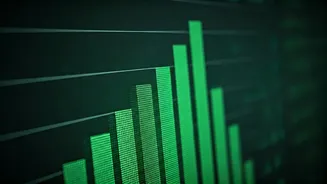What Are Derivatives?
At its core, a derivative is a financial contract whose value is dependent upon an underlying asset. These assets can range from stocks, bonds, and commodities,
to currency exchange rates and market indexes. The fundamental function of a derivative is to 'derive' its value from another asset or benchmark. This implies that the price movements of the derivative are tied to changes in the underlying asset's price. Consequently, derivatives do not exist in isolation; their worth is contingent on the performance of a separate, tangible asset. Therefore, a thorough comprehension of the underlying assets is fundamental to understanding derivatives. These assets form the base for the derivative's value, making the link between the two crucial for traders and investors. They’re a significant aspect of contemporary financial markets and are increasingly used by institutions and individual investors.
Types of Derivatives
Several categories of derivatives exist, each tailored to meet particular financial objectives. Firstly, futures contracts represent agreements to buy or sell an asset at a predetermined price on a future date. They are commonly employed for hedging or speculation and are often used in commodity markets. Secondly, forwards are similar to futures, but they are customized contracts traded over-the-counter (OTC), offering greater flexibility. Thirdly, options give the holder the right, but not the obligation, to buy (call option) or sell (put option) an asset at a specific price by a specific date. These are popular for risk management and speculative trading. Lastly, swaps involve the exchange of cash flows based on different financial instruments. Common examples include interest rate swaps and currency swaps. Each type carries its unique risk and return profile, allowing investors to tailor their strategies.
Uses of Derivatives
Derivatives serve various purposes within the financial sphere, with risk management being a primary function. Businesses and investors utilize these instruments to hedge against price volatility, shielding themselves from potential losses. For example, a farmer might use futures contracts to lock in a selling price for their crops, thus mitigating the risk of price declines. Speculation is another critical use, where traders bet on the future price movements of an asset. Through this, derivatives facilitate exposure to assets without owning them directly, amplifying potential gains but also losses. Furthermore, derivatives aid in price discovery, providing crucial information about future expectations regarding asset prices. This data enables market participants to make informed decisions. Derivatives increase the overall liquidity of markets by providing additional trading opportunities and attracting a wider range of investors.
Derivatives and GST
The interaction between derivatives trading and Goods and Services Tax (GST) is an area of considerable interest. Currently, the GST framework in India applies to various financial services, including derivatives trading. Generally, the provision of these services attracts GST, and the specifics, such as the rate, depend on the nature of the transaction. The introduction of GST had a significant impact on the financial services sector, including how derivative transactions are taxed. Businesses and traders involved in derivatives trading need to comply with GST regulations, including filing returns and remitting taxes. The complexities of tax treatment on derivative transactions warrant careful consideration. It's essential to stay informed about the latest rulings and developments, as these can affect tax liabilities and compliance requirements. Keeping updated ensures traders can navigate the tax aspects of derivatives trading effectively.
Risks Involved
While derivatives offer many advantages, they come with substantial risks. One key concern is leverage, where investors can control a larger position with a smaller investment. This increases potential gains but also magnifies potential losses. Market risk, the susceptibility to market volatility, poses another challenge. Sudden price fluctuations can lead to significant financial setbacks. Counterparty risk is also present, especially in OTC derivatives, where there is a risk that the other party may default on its obligations. Furthermore, liquidity risk refers to the potential difficulty of quickly converting a derivative position into cash, particularly in less active markets. Understanding and managing these risks are essential. Effective risk management strategies, including hedging and diversification, can help mitigate these potential dangers. Therefore, understanding and carefully managing the risks linked to derivatives trading is key.














